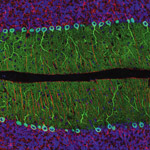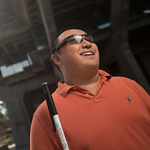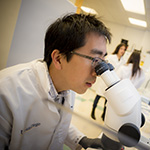Nikon Imaging Center Opens at UC San Diego
The Nikon Imaging Center, a collaborative microscopy center that provides local researchers with access to the latest imaging technologies, opened September today at the University of California San Diego.
The Nikon Imaging Center, a collaborative microscopy center that provides local researchers with access to the latest imaging technologies, opened September today at the University of California San Diego.

UC San Diego and the Black Alumni Council are partnering to strengthen support of Black students. In total, $135,000 will be awarded to 54 students through the UC San Diego Black Alumni Scholarship award this fall, including 19 incoming freshmen and 35 current students whose awards will be renewed.

The University of California San Diego announced that Lytx, a San Diego-based video telematics and analytics pioneer, has established the Lytx Graduate Fellowship for Masters of Science in Business Analytics (MSBA) students at the university’s Rady School of Management.

Aira is pleased to announce that the University of California San Diego is the first Aira-enabled university in the United States. Aira, a San Diego-based startup, leverages wearable technology, artificial intelligence and live, human agents to deliver real-time visual description for people who are blind or have low vision. UC San Diego is the first university to join the Aira Campus Network, offering free access to the pioneering accessibility technology to vision impaired members of its entire campus community including students, staff and faculty.

University of California San Diego and Deerfield Management announce today the creation of Poseidon Innovation, LLC to advance disease-curing therapeutics. Through Deerfield’s $65-million commitment in Poseidon, UC San Diego investigators will have the funding and support to weather risky early-stage processes and expedite the drug-development cycle, allowing patients to receive treatment faster.

The UC San Diego Library will celebrate 15 years of Dinner in the Library, its signature fundraising event for lovers of libraries and books, with San Diego-raised novelist and UC San Diego alumnus, Luis Alberto Urrea ‘77 on Friday, Sept. 21 from 6-9:30 p.m.

Keep up with all the latest from UC San Diego. Subscribe to the newsletter today.
You have been successfully subscribed to the UC San Diego Today Newsletter.